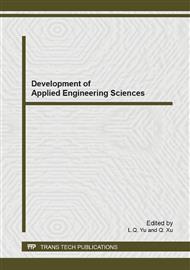p.248
p.253
p.258
p.264
p.270
p.274
p.278
p.283
p.288
Design of Testing & Identification System for Recovery Material of Launch Control Device of Certain Missile
Abstract:
This article presents a method for testing and identification of a recovery material of certain missile, systematically analyzes the diagnostic approach and technology of PCB faults, expounds in detail design concept of the system, sets forth the solution using C8051F020 chip as microprocessor and testing of analog and digital I/O with built-in converter, contrives polarity discrimination circuit, provides software design process and main program by means of design thinking of modularized software, which help increasing program reliability and lowering development cost. The experimentation proves that this system is able to precisely position the faulty module of PCB to be identified, as well as make correct and reasonable opinion for maintenance. The design method and concept of this article is of significant value for reference in the research and development of similar testing and identification system.
Info:
Periodical:
Pages:
270-273
Citation:
Online since:
October 2014
Authors:
Keywords:
Price:
Сopyright:
© 2014 Trans Tech Publications Ltd. All Rights Reserved
Share:
Citation:


